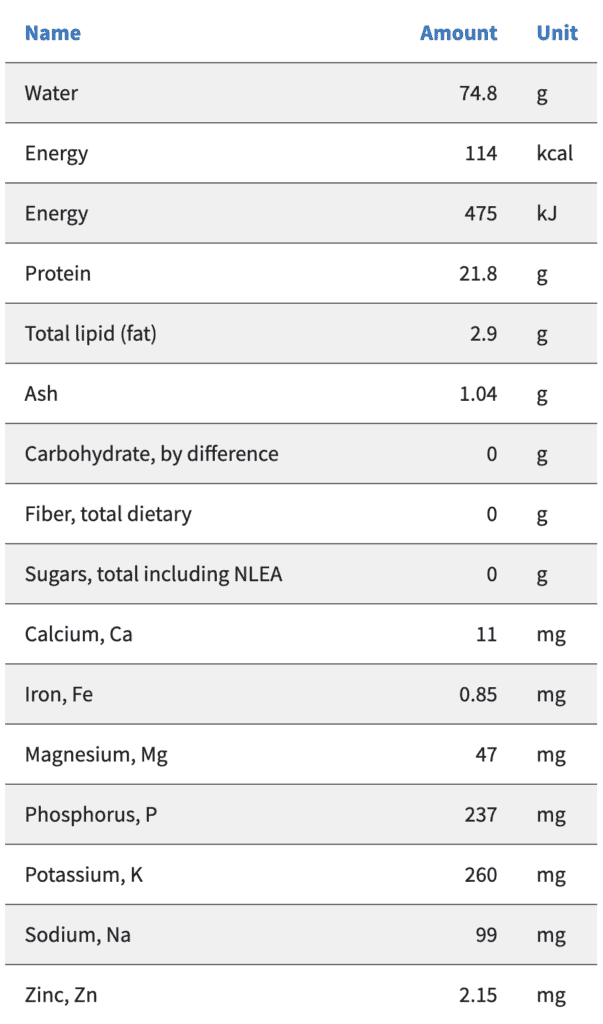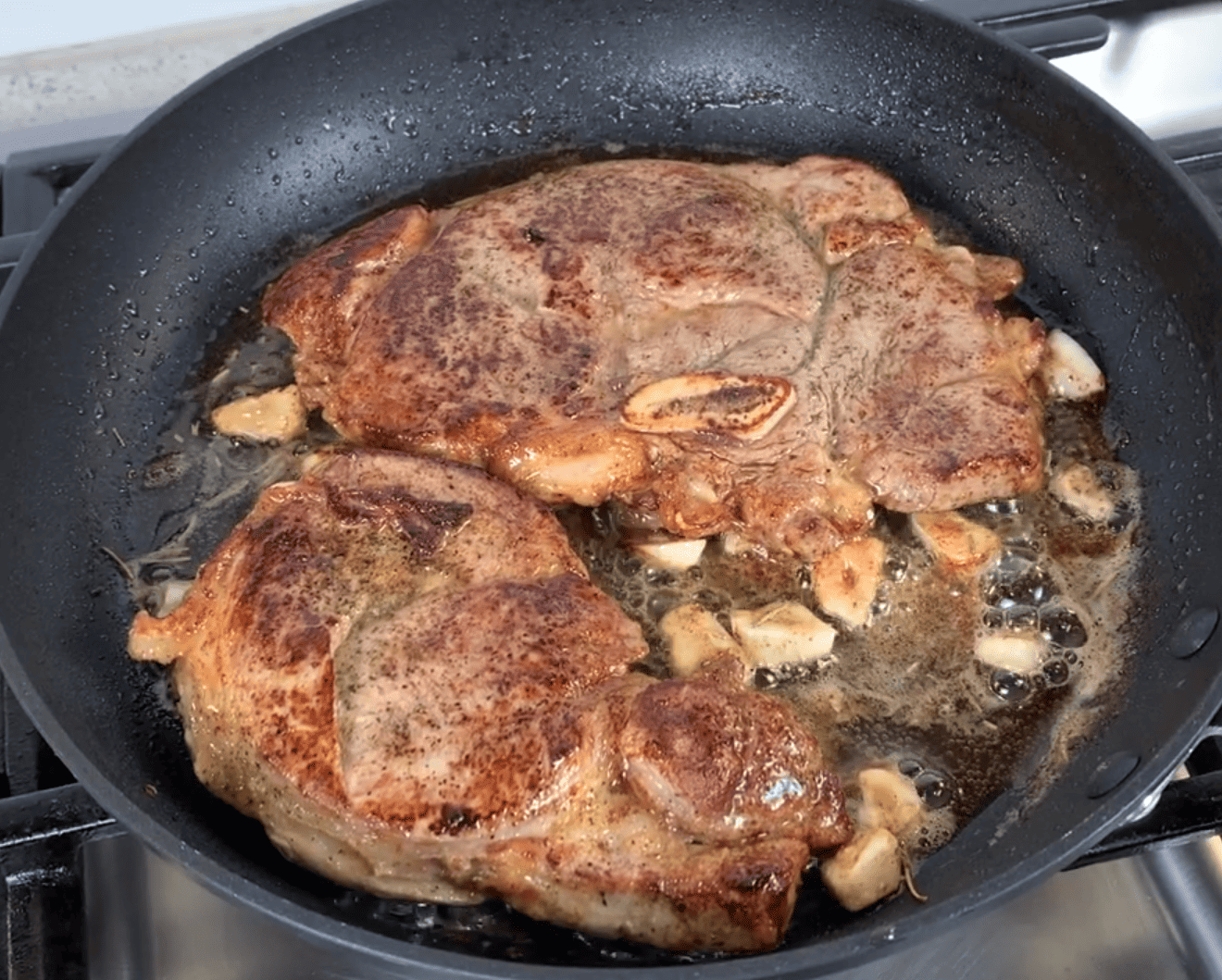As an Amazon Associate, I earn from qualifying purchasesYou’re hungry but don’t know what to cook? It’s time to add veal to your weekly recipes. Veal is a delicious, versatile meat that is perfect for weekday meals. Its delicate flavor is a great way to reinvent your favorite classic meals, as it’s a nutritious type of meat that tastes great. Italian and French cuisines use veal in many recipes.
But what is veal? Veal is just beef that has been harvested before maturity; both veal and lamb are meats taken from young animals. Veal is tender because the cattle’s muscles have not been developed yet. It is a natural by-product of the dairy industry. There are two kinds of veal: grain-fed and milk-fed. Grain-fed veal provides darker red meat than milk-fed veal.
Typical cuts of veal include ground, chops, cutlets, short ribs, breast, stew, and kebab meat and shranks. Different cuts of veal require other cooking methods. But what does veal taste like? This post aims to explain what veal tastes like and more.
So, What Does Veal Taste Like?
Veal meat is very tender, succulent, and has a mild flavor. Although some people expect it to have a gamey flavor, veal has a delicate and neutral flavor. It is leaner than poultry or lamb meat but has as much protein as beef. Unlike beef, veal has a tender texture and very mild flavor.
As it is lean meat, veal is ideal for chefs and cooking lovers. Especially if you want to amplify the taste of your veal, you can add spices and seasonings.
In general, veal is cooked to a well-done state, like pork. However, if the veal is cooked to less than well done, it tends to have a sour taste. The exception is the veal filet. Even though getting a veal filet may be challenging to get from your local butcher, it’s worth a try.
How are Veal Calves Raised?
Veal is raised predominantly in the northern half of the United States but even closer to that in the Midwest, the Upper Midwest, such as New York, Pennsylvania, Ohio, Michigan, and Wisconsin. The veal industry is following the dairy industry and the cheese plants, so the camps are found where the cows are. Veal is allowed to have the capacity to express its natural tendencies; to be outside, in the sunshine, eating grass, and consuming whole milk (instead of powdered milk). The preference goes for male calves as they don’t produce milk.
There are different variations of meat in veal production, depending on the age of the calf:
- Bob Veal – this comes from calves younger than five days old and is usually a pale pink color. Bob veal has the mildest flavor.
- Milk-Fed Veal – also known as “white veal,” this veal is usually taken at around four or five months old. The calves are raised on fortified cow’s milk and nutritious feeds.
- Grain-Fed or Red Veal – the calves for red veal are usually six months old. The calves are raised on stock feed grain, producing tougher, red meat.
- Rose Veal – the meat is taken from calves older than six months, usually eight months old.
- Free-Ranged Raised Veal – this meat comes from calves roughly five months old, which have been raised in green pastures.
Young calves are raised in groups of ten, where they can lay down, walk around, and groom naturally. They are not raised with tethers or in crates. Once they reach 100 pounds, they go into a starter system, like a nursery system, where they get individual care until they’re healthy enough and have a good immune system. Then, they move into a housing group of 5-10 animals, where they are raised to weigh about 500 pounds. They start as individuals in a pen because they need extra attention when they’re babies.
To ensure the calves are healthy, field service technicians visit the farms on a bi-weekly basis. Full-time veterinarians make regular visits to the farm as well. Long-term growers’ priority is to take care of the animals.
For more humanely raised veal, ask either for free-ranged raised veal or grass-fed veal. After all, how the beef tastes depends on how it is raised.
Nutritional Information
Veal is very nutritious; it is low in fat, high in protein, minerals and B vitamins.
According to SR Legacy, 100g of veal contains:

How to Cook Veal
According to USDA, ground veal should have a minimum internal temperature of 160°F. There are two basic ways to cook roast veal: dry or moist heat.
Tender cuts such as cutlets, leg, veal patties, rib, or loin chops can be cooked with dry heat methods like broiling, roasting, pan broiling, stir-frying, or grilling. The same cuts can be cooked with moist heat methods such as simmering in liquid or braising.
Moist heat cooking methods are suggested in less tender cuts such as stew meat, cross-cut shanks, round steak, and breast veal. It’s essential to marinate and pound less tender cuts to break down connective tissue. If so, dry heating methods can be used as well.
How to Make Veal Softer
Brining is an excellent technique to prepare veal to make it softer and tender. To start your brine, boil water and add salt to make the veal incredibly juicy and enhance its flavor. You can also add a little bit of sugar to balance the salt and help caramelize the veal when it’s in the pan.
Recipes for Veal
Veal has a delicate flavor and a pretty neutral taste, allowing it to be cooked in a variety of ways. There are over 20 different cuts of veal, making this tender and lean type of meat perfect for the whole family. Some veal recipes are:
- Vitello Tonnato (a classic Italian dish; cold poached or roasted veal combined with a fish sauce)
- Veal Oskar (a veal chop served with crab meat and bearnaise sauce, garnished with asparagus spears)
- Roasted rare veal with a watercress and mussel sauce
- Ossobuco
- Milanese veal cutlets
- Stuffed breast of veal
- Wiener Schnitzel
Microwave Directions:
- If you choose to microwave unequal size pieces of veal, arrange them on a rack or in a dish with thick parts being placed toward the outside of the dish/rack and thin parts being placed in the center, and cook on medium or medium-high power.
- Place a roast in a covered pot or an oven-cooking bag.
- Refer to the microwave’s directions for suggested cooking times.
- Use a food thermometer to test if the meat is done by checking if the temperatures have been reached.
Storage
You can freeze or refrigerate (at 40°F or below) a fresh veal immediately after bringing it home. However, it is essential to know how long this meat will last in the fridge or freezer.
Use ground veal or stew meat within 1-2 days and veal roasts and chops within 3-5 days. If you freeze raw veal at 0°F or below, the veal will be safe; however, the quality may be affected as it may be susceptible to freezer burn or have a different taste and look. Use frozen roasts and veal chops within 4-6 months and stew or ground veal within 3-4 months.
Leftovers
If your fresh veal dish has been left out for more than 2 hours (or even 1 hour if the temperature is above 90°F), you should discard it. You can refrigerate any leftovers at 40°F or below in shallow containers. Eat veal within 3 – 4 days when refrigerated either cold or reheated to 165°F; within 4 months when frozen (suggested for ready-prepared veal dishes).
Conclusion
But what does veal taste like? Someone would expect to taste like beef, but they are not the same thing (in any way!). When you think of what veal would taste like, imagine a softer, less aggressive flavor than beef.
Veal is a great addition to your weekly recipes as it’s a good source of protein and a great way to cut calories! If you add veal to your weekly menu, you’ll discover that it’s not only nutritious, it’s delicious too! Follow our blog for more ideas featuring nutritious meat recipes that are worth a try!
If you want to know what antelope tastes like, check out this article.
- Marie Callender’s pie crust recipe - August 24, 2023
- Outbacks chicken tortilla soup recipe - August 24, 2023
- Publix fried chicken recipe - August 16, 2023

